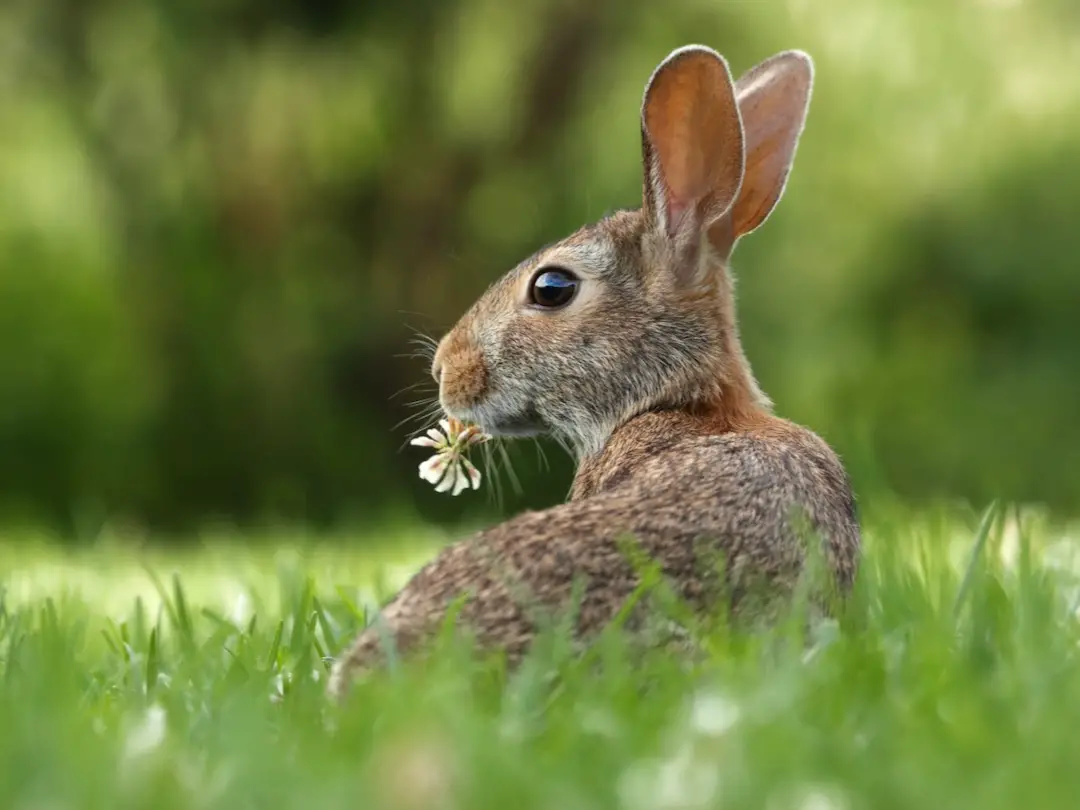By Kristin Woodbury, Education Director at the San Diego House Rabbit Society
The vast majority of people would agree the bunnies are among the cutest pets you can have. Their fluffy fur, floppy ears, and big eyes captivate young and old alike. Interestingly, the placement and size of rabbits’ eyes enable them to see predators coming from both sides. Rabbits are also usually farsighted, so they can glimpse a danger coming from far away. Unfortunately, because of the eye anatomy rabbits are susceptible to the whole array of eye conditions. Here we’ll discuss bunny eye care, including common treatments and solutions.
Bunny Eyesight
Regardless of being able to see danger coming from afar, rabbit eyes have blind spots directly in front of them, directly behind them and under their chin. Moreover, their eyes are so big it makes them quite open to injuries. Rabbits are also partially colour blind and their eyesight considerably decreases in very bright environments. That’s why, sadly, so many rabbits die when they get blinded by the headlights of cars.
Common Eye Issues
The most frequent eye problem among the rabbits is associated with their tear ducts. Rabbits’ tear ducts are prone to inflammation and they can get watery. There’s also a sticky discharge that gathers around the eye and fur around it. To make matters worse, tear duct issues are connected to poor dental health.
The reason for this is the fact that rabbit tear ducts run just above their top teeth. Overgrown front teeth press the tear ducts, making them closed and infected.
If you think your floppy-eared friend may be suffering from this, take him or her to your veterinarian, who will flush out the ducts with saline solution and drive the pus and infected substance out. Rabbits are also susceptible to foreign bodies in their eyes, like pieces of bedding, food or anything else that doesn’t belong inside or around the eye. These are usually small and light, so they easily get stuck.
To treat a foreign body you will need cotton wool and cooled boiled water. If the soreness persists after you cleaned your rabbit’s eye, you should consult your vet.
Serious Eye Issues
Physical wounds around the eye can cause serious distress in the eye area. The most common form of eye damage is swelling directly under the eye which forms an abscess as a result of the wound around the eye. The abscess appears in the form of a bump that suddenly appears. On the other hand, rabbit eye ulcers happen when something gets stuck in the rabbit’s eye, or the eyeball suffers some form of trauma to the cornea, the clear, outermost layer of the eye.
An ulcer is a defect in the cornea and it’s usually very painful. If you see your bunny scratching the eye or holding it shut, that’s the indicator the eye is painful or irritated. Conjunctivitis, or “pink eye” is the inflammation of the pink tissue around the rabbit eye. Rabbits can catch conjunctivitis from an environment rich in bacteria, such as dirty water, or a dirty cage. Proptosis is the worst and thankfully the rarest rabbit eye problem. Basically, proptosis is the eyeball popping out of your rabbit’s head, and it usually takes severe trauma to happen.
Eyes, Teeth, and Health

If you notice that your bunnies have bright and healthy eyes with equal pupils and without any discharge, you can make sure that their teeth are in good condition too. The best way to keep your rabbits’ teeth healthy is through feeding your pet a diet rich in fibre, such as hay, grass and raw vegetables. High fibre is the best rabbit food for teeth health.
Chewing high fibre food will prevent bunny teeth from growing too long and blocking tear ducts. Generally speaking, if rabbits eat well they will be healthy.
Prevention and Treatment
The best way to maintain your rabbit’s eye health is to feed them with proper levels of roughage and long fibre, such as grass and hay. That way you will prevent teeth from overgrowing and blocking tear ducts. Just in case, examine your rabbit’s eyes frequently for any anomalies. Keep your bunny in spacious living quarters with access to open space where it can run. A lot of room to run around will keep your bunny fit and happy.
Don’t forget to clean out your rabbit repeatedly. That way you will decrease bacteria and ammonia levels built from soggy paper, sawdust or straws, which is usually used for lining. If you have more than one bunny, they will help each other clean their eyes by grooming and licking the fur around their companions’ eyes. It’s also very important to keep your bunnies vaccinated. Some serious conditions, such as myxomatosis, can be mistaken for an eye condition. And it goes without saying that you should always seek the vet’s help whenever you are worried about your bunny’s eye health.
Conclusion
Bunnies are really cute, but also prone to various illnesses. Their eyes are especially sensitive because of their size and position. There are many ways in which bunnies can hurt their eyes, from light to severe ones. Thankfully, there are many ways to help and treat your fluffy friends’ eyes and to prevent bad things from happening by taking good care of them.
More articles…
Lots of eye problems come from teeth problems. Find out more about rabbit teeth.
Take a look at our article on how rabbits see the world.
You might also like to find out more about how rabbits hear the world.
We also have a look at when and how rabbits sleep.
And if you’re looking for some boredom busters for your bunnies, we’ve tried ten different toys that were a success.
The main feature image on this page was by Gary Bendig on Unsplash.


